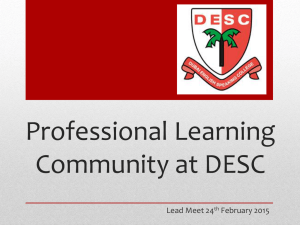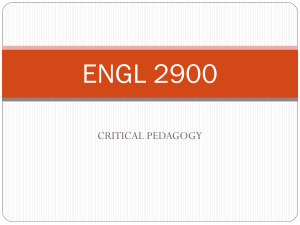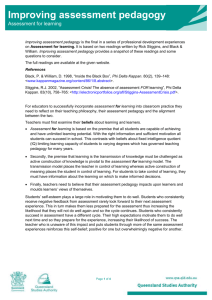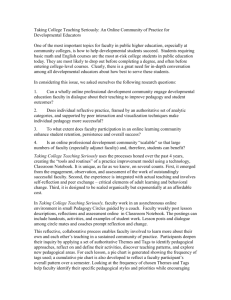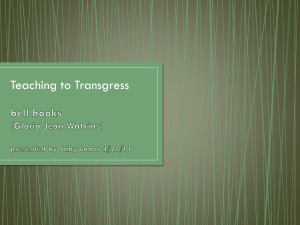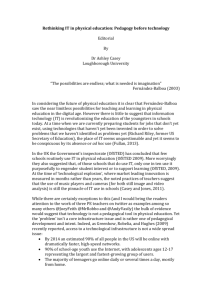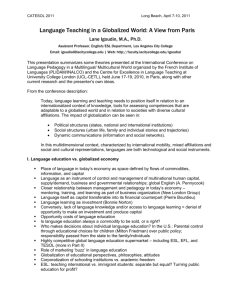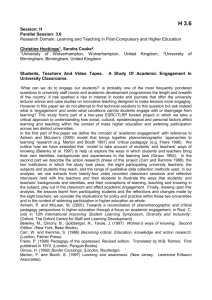Maria James – Values in RE Pedagogies
advertisement
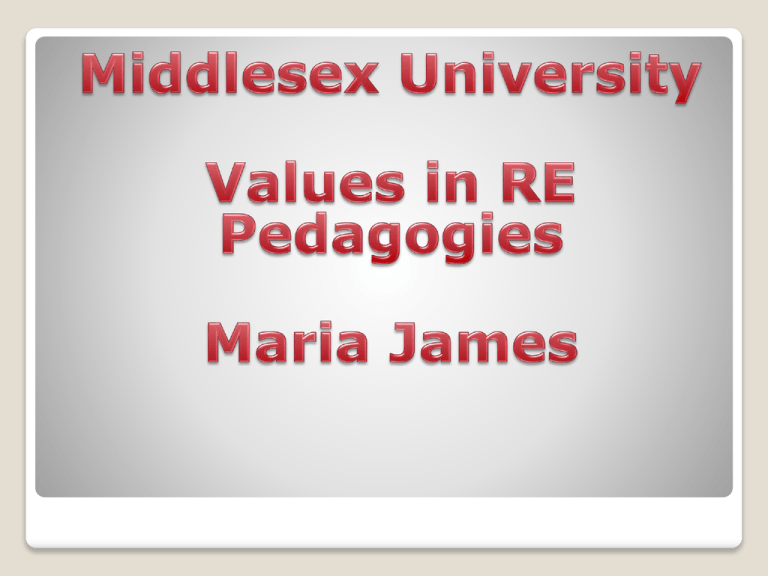
prospect faith affirming support ubuntu care expectation tenderness resrespect llove concern love wish hope trust hope love respect confidence F possibility hope optimism friendship integrity trust faith personal regard faith aspiration Why, then do you look at the speck in your brother’s eye, and pay no attention to the log in your own eye? How dare you say to your brother ‘Please let me take that speck out of your eye’, when you have a log in your own eye? You hypocrite! First take the log out of your own eye, and then you will be able to see clearly to take the speck out of your brother’s eye. (Jesus, recorded by Matthew) Research ‘on’ others can be vicious – how can we ensure virtuous, values-based research/practice? Name one educational value that you hold. In what way does this value inform practice? How can practices be said to be 'values-based'? How do we conceptualise 'virtues' and 'virtuous practices'? What is the difference between 'values' and 'virtues’? What might be some of the implications of these ideas for everyday educational practices? How do we assess 'quality' and 'impact' in light of a commitment to virtuous practices? If 'value' refers to what we believe is 'good', how do we define 'good' or 'the good'? What might be everyday criteria for judging quality in practice and research? How do we live with values pluralism? What does a pedagogy of love look like? http://www.inclusionalresearch.org/thedance.php The Dance By Laura Bateson We meet nervously I invite you to walk I find you dancing I rejoice Palmer maintains that ‘technique is what teachers use until the real teacher arrives’ (2007, 118). Rego Matisse I didn't like RE at primary school. I was taught by our headmistress who I remember would always tell me off for not joining up all of my handwriting and expected more from me. She thought that I wasn't putting all of my effort into RE, and she was right because I found it boring. We would basically read a story from the bible and then go home and have to write about it and draw a picture of it. I did like drawing the pictures though! (Camilla, PGCE 2010). In a real conversation (that is, not one whose individual parts have been pre-concerted, but one which is completely spontaneous, which each speaks directly to his partner and calls forth his unpredictable reply), a real lesson (that is, neither a routine repetition nor a lesson whose findings the teacher knows before he starts, but one which develops in mutual surprises), … in all these what is essential does not take place in each of the participants or in a neutral world which includes the two and all other things; but it takes place between them in the most precise sense, as it were in a dimension which is accessible only to them both. (Buber, 2002, 241-242) Hessed: It is love moralised into small gestures of help and understanding, support and friendship: the poetry of everyday life written in the language of simple deeds. Those who know it experience the world differently from those who do not. It is not for them a threatening and dangerous place. It is one where trust is rewarded precisely because it does not seek reward. Hessed is the gift of love that begets love (Sacks, 2005, 46). What might a pedagogy of faith look like? Developing an other-centred epistemology Developing a pedagogy appropriate to transformational learning Developing a pedagogy of space Becoming a fellow traveller One student said ‘you look to recognise’ Expressions of a pedagogy of faith emancipation pregnant pause ontology dialogue gentleness love creativity growth Creative space ambiguity space puzzlement respect Non- coercion Non- confessionalism dignity freedom encounter human face hope Packaged RE Materials How do some RE materials perpetuate a download mentality? Drawing Hands by Escher (1948) Relativity by Escher (1953) The second image … feels calming and more human. The two hands immediately make me think of the two attainment targets of RE and how they link together, help define each other and create an intriguing bigger picture. Like the first image, it’s a puzzle which invites debate where the answers are not as important as the shared discussion about the mystery – something I am excited to get to try out in the classroom as we have done. I also see the relationship between teacher and pupil – each side sharing their ideas equally – as well as the relationship between pupils and the faiths … The hands are still drawing, suggesting a work in progress, which is also how I see RE – a positive, ongoing process of engaging with ideas creatively rather than just simply learning dry facts. (Justin, PGCE Student, Pictorial Transition Metaphor) Supper at Emmaus Caravaggio 1601-2 Invitation to learn? To encounter faith? How might a pedagogy of hope be developed? Figure 6:1 Hope – Back Cover of Seed Magazine, Chicago, January 1968 Hope in using one’s voice Hope in being heard Creating a dialogue of hope Developing a practice of attentiveness How might a pedagogy of hope be developed? Minimal movement in perception in learning in RE – No! for this Irish student the movement was immense From static to more living forms of knowledge? Why would a student choose this image to represent her initial thinking about teaching Primary RE? The image of the tree encapsulates what, after one lesson, I will expect to get from RE lessons. I will expect to get a strong grounding in the facts and knowledge (roots and trunk) but then a spread of views and opinions from the tutor and the class about what we learn and how to share it with the class (branches) The artist decorated dead trees. I am very interested in faiths and as a non-believer am a little envious of those with faiths. I hope the resurrected tree conveys my desire to take my current position as an agnostic to keep exploring, understanding and questioning so that I may be a good teacher of RE in the future. What about this image after our RE course was completed?
